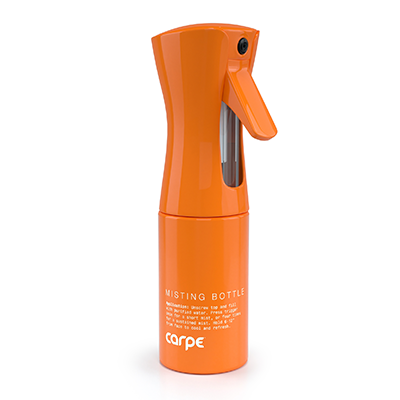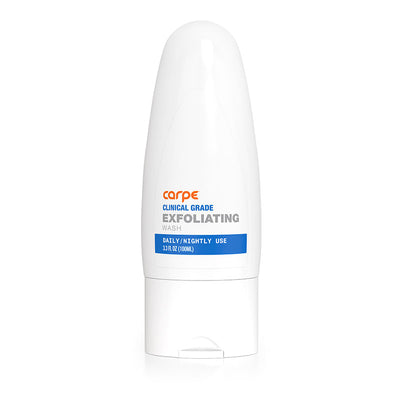Are you confused about antiperspirant deodorant? You’re not alone! Most people don’t understand the differences between deodorant and antiperspirant, or even what they are really used for. So, a combination product is even more of an enigma. Here are the answers to all of your antiperspirant, deodorant, and antiperspirant deodorant questions!
Antiperspirant deodorant is just what it sounds like - it combines the sweat reducing active ingredients found in antiperspirant with the antibacterial properties and scent of deodorant. Many people, especially those with hyperhidrosis, or excessive sweating, need the sweat prevention provided by antiperspirant and the bacteria and odor fighting action of deodorant.[1] People may struggle to understand whether they should use antiperspirant or deodorant, but thanks to antiperspirant deodorant, they can easily use both. Antiperspirant deodorants come in stick form, spray, and roll-on to make use convenient. To better understand what antiperspirant deodorant is, it is first necessary to understand the individual products that the combination is made from.
What Is Antiperspirant?
So, what is antiperspirant? It is a substance that people apply to the body which contains an active ingredient that reduces sweat production. Most antiperspirants on the market use a metallic salt, like aluminum chloride or aluminum zirconium trichlorohydrex, as an active ingredient. An active ingredient is just the ingredient in a medication that makes it work. The metallic salts in antiperspirant form a superficial plug in sweat glands when mixed with the sweat a person produces. This can be extremely helpful for people who have overactive sweat glands.
There are several types of antiperspirants on the market that vary in strength, contain different active ingredients, and are mixed with different moisturizers and scents. This can make it challenging to choose the right over-the-counter antiperspirant.[1] In addition to using different types of active ingredients, antiperspirants come in a variety of application types. There are roll on antiperspirants, stick antiperspirants, sprays, and lotion antiperspirants. While all antiperspirants essentially do the same thing, the type of application method you should use is based on the part of your body you need to apply it and your personal preference.
Antiperspirant is considered to be a type of drug according to the FDA. This is because the active ingredients it uses are able to change the function of skin, by preventing the production of sweat. This means that antiperspirant is regulated by the FDA to ensure that it is safe to use.[2] However, in the last decade, there has been some debate as to whether or not antiperspirants cause cancer, and even Alzheimer's. However, there is little evidence to back up any claims that antiperspirants cause cancer. According to the American Cancer Society, there are no strong epidemiological studies to date that link breast cancer and antiperspirant use. There are several chemicals in antiperspirant that people have been worried about exposure to including aluminum and parabens, but using antiperspirants with these chemicals does not seem to be an issue.[3]
What Is Deodorant?
Unlike antiperspirant, deodorant is not considered to be a drug by the FDA. Instead deodorant is considered to be a cosmetic product.[4] Deodorant is a substance applied to the body in order to reduce the smell of body odor and kill the bacteria that produce it. Many commercial deodorants use ingredients like sodium stearate, sodium chloride and stearyl alcohol, parabens, or the stronger ingredient triclosan, to kill bacteria present on the skin. They also contain a variety of scents which mask smells produced by the body.[2]
There are some concerns about the chemicals in deodorants. Like antiperspirant, some people worry that deodorants may cause cancer - probably because they are often mixed with antiperspirant in products. However, deodorant on its own typically doesn’t contain aluminum, which is what the cancer scare predominantly stemmed from. People are also concerned about the fact that deodorants contain parabens which are used as preservatives in deodorants and other products. Some researchers worry that parabens disrupt how hormones naturally work in the body in a way that may lead to cancer, but as now, there is no conclusive evidence of this according to the American Cancer Society. There are also concerns regarding other chemicals in deodorants like triclosan, phthalates, and fragrances. While some of these chemicals could potentially have some harmful effects, at the moment, there doesn’t seem to be conclusive evidence that deodorant is unsafe. If you are worried about the possible effects of the chemicals in deodorants than you should look into using a natural product, of which there are many on the market.[5]
Combination Products
Humans have been manufacturing deodorants for thousands of years, but in the late 1800’s modern antiperspirant and deodorants were produced for the first time.[6] Since then, people have been trying to find the perfect combination and this is why antiperspirant deodorants were created. Several popular companies, like Dove and Axe, sell combination products and many people happily use them. This is because people often need the sweat-reducing properties of antiperspirants but still desire the bacteria-fighting and odor-reducing properties of deodorant. By combining both antiperspirant and deodorant, consumers only have to purchase one product.
Buying a combination product costs less money than buying separate ones, saves time during a person’s morning routine and just makes sense. In a sense, many of the products on the market are combination products, even if they are not labelled as such. Oftentimes, antiperspirants will include a fragrance and may also have antibacterial properties while only being advertised as an antiperspirant. However, it is much less likely that a deodorant product would be labeled as an antiperspirant because of the FDA regulations. In order to determine whether or not a product is an antiperspirant, deodorant, or a combination of the two it is necessary to read the label carefully. It is always a good idea to be informed about the products you use on your body.
When Combination Products Don’t Work
There are, however, limitations when it comes to antiperspirant deodorant products. Some people require stronger antiperspirants, and in order to get the right protection, they need to use a clinical strength or prescription antiperspirant - and these often don’t come mixed with deodorant.[1] In this type of situation antiperspirant deodorants may not be the best choice. Instead, people can use a strong antiperspirant and choose the deodorant of their choice to apply over top of it. While it may seem more convenient to buy a combination product, in this type of situation, it is prudent to make sure you have individual products that meet your specific needs.
It is important to find an antiperspirant and deodorant combination that works for you, even if they are separate products that you use together to make things work. It is beneficial to do your research as there are many types of products available today. For example, there are many natural products that may be available online if you struggle to find products in store that fit your needs. There are also combination products that have various mixes of antiperspirant ingredients and deodorant ingredients, so don’t feel limited if you do best with a particular type of ingredient. In the end, the search will be worth going through to have a product that meets your particular needs. If you need more information about the different types of antiperspirants and deodorants there is tons of information on the rest of our site, we’re here to help!
Sources
- Pariser, D. M. (2014). Hyperhidrosis (4th ed., Vol. 32). Philadelphia, PA: Elsevier. Retrieved from https://www.elsevier.com/books/hyperhidrosis-an-issue-of-dermatologic-clinics/pariser/978-0-323-32607-0
- Zirwas, M. J., & Moennich, J. (2008). Antiperspirant and Deodorant Allergy Diagnosis and Management. The Journal of Clinical and Aesthetic Dermatology, 1(3), 38-43. Retrieved November 12, 2018 from https://www.ncbi.nlm.nih.gov/pmc/articles/PMC3013594/
- Antiperspirants and Breast Cancer Risk. (2014). Retrieved April 25, 2019, from https://www.cancer.org/cancer/cancer-causes/antiperspirants-and-breast-cancer-risk.html
- Antiperspirants & Deodorants. (n.d.). Retrieved November 12, 2018, from https://cosmeticsinfo.org/antiperspirants-deodorants
- Heid, M. (2016, July 5). 5 Things Wrong With Your Deodorant. Time. Retrieved November 18, 2018, from http://time.com/4394051/deodorant-antiperspirant-toxic/






16790753702383.jpg?v=1679075372)

16790746985853.jpg?v=1679074700)


16790757289763.jpg?v=1679075731)










